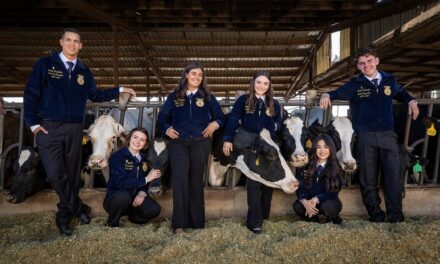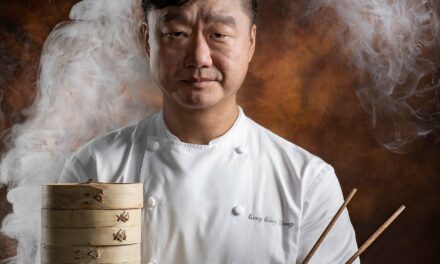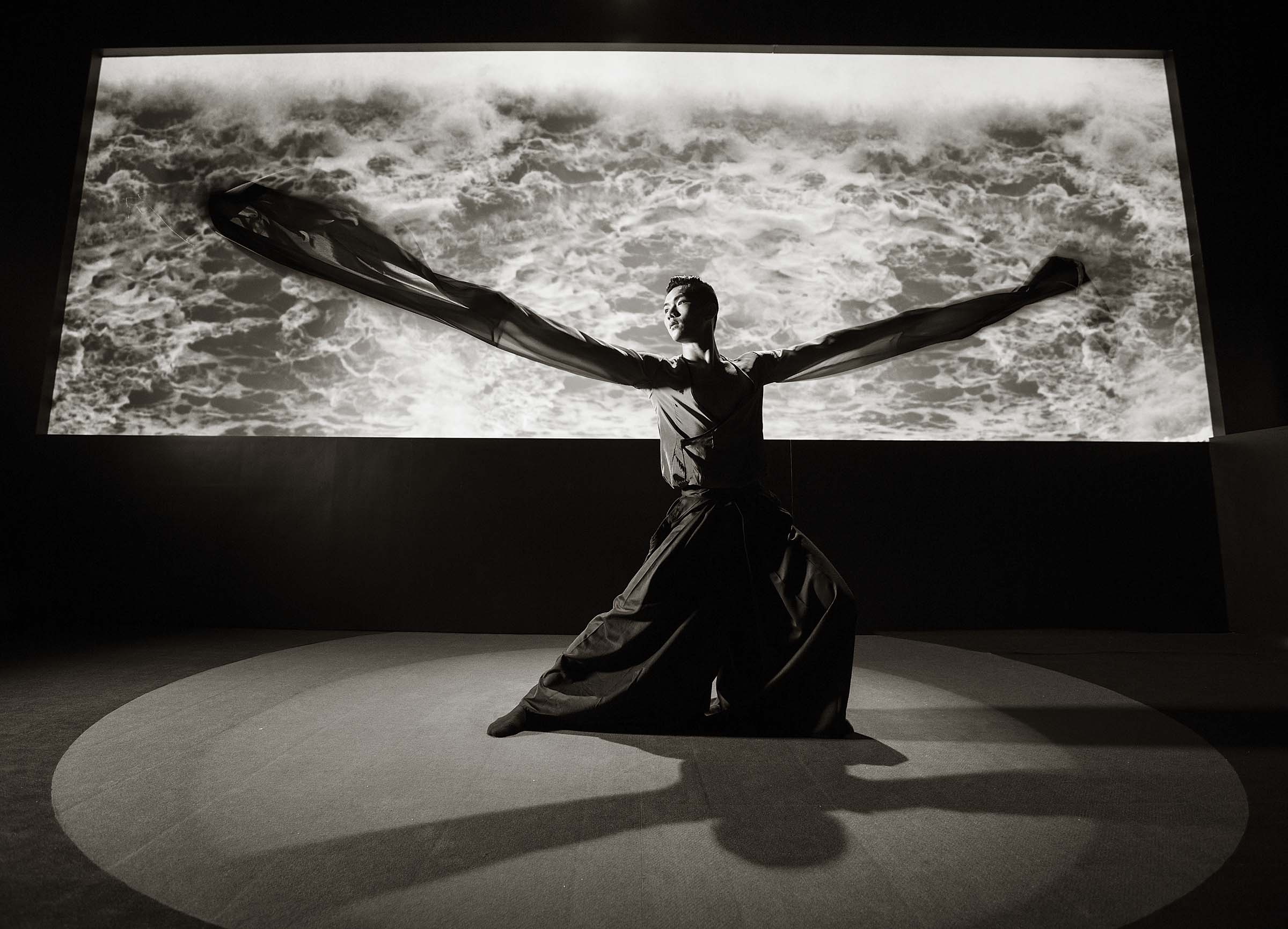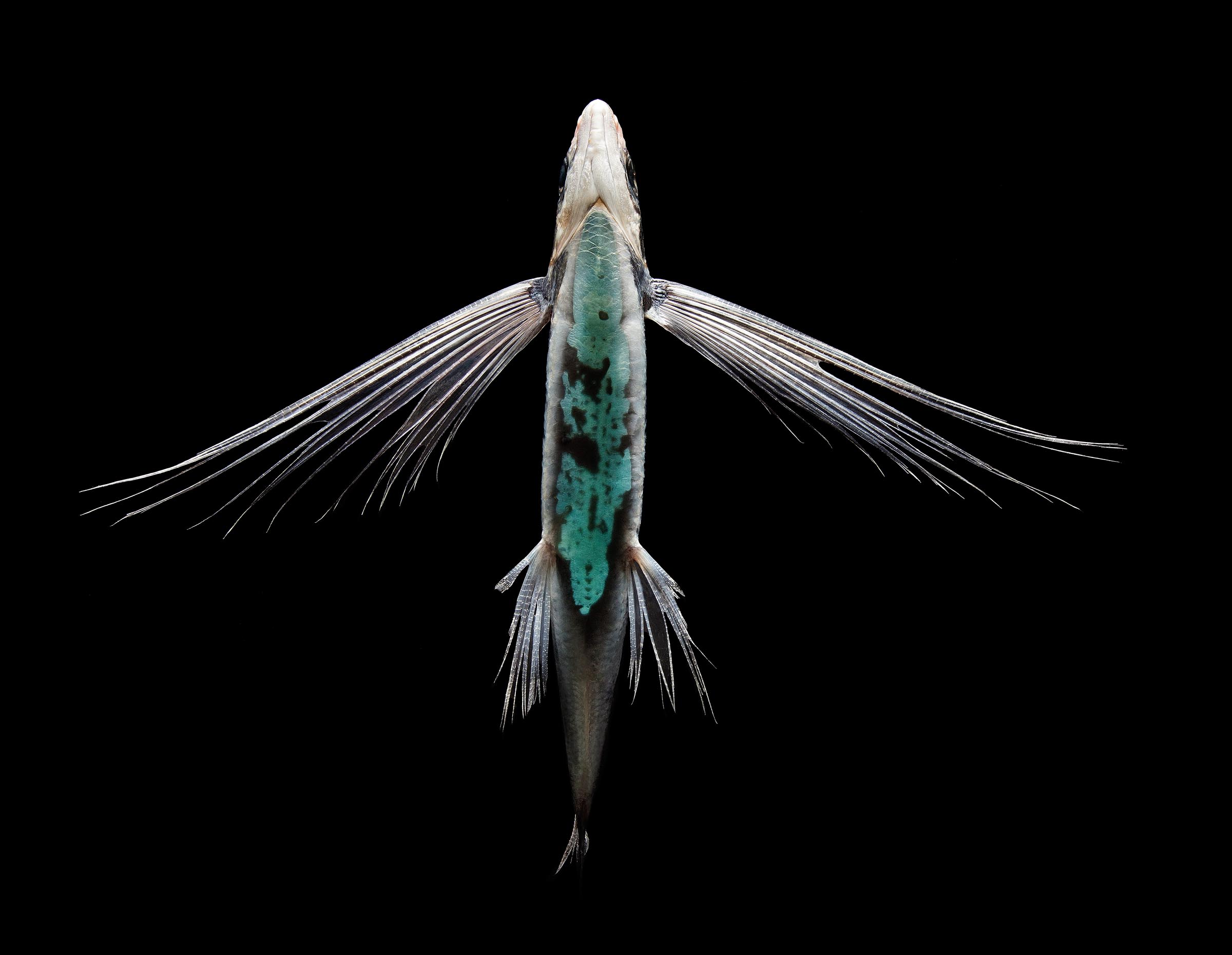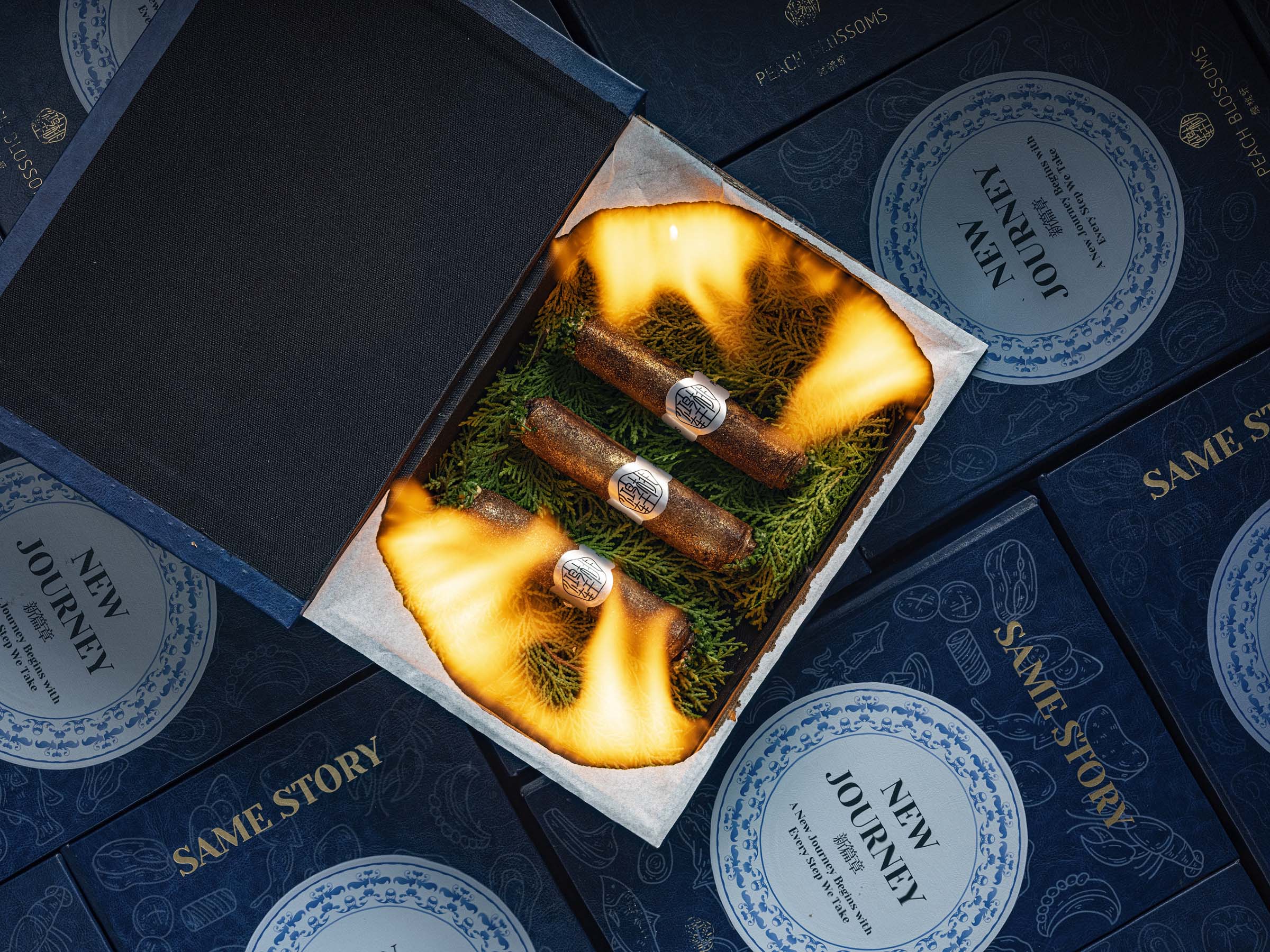
Modern Chinese Cuisine
Peach Blossom Restaurant, Singapore
I recently did a shoot for Tasting Kitchen (TK) magazine at the Peach Blossom restaurant located in Singapore’s Parkroyal Collection Marina Bay Hotel. Working with the talented Chef Edward Chong I got to both enjoy photographing his creations as well as eating them.
For the image above, Same Story, New Journey, I found myself in a very technically challenging situation. It was the first shot of the day and if I screwed this one up I worried that Chef Chong would lose confidence in my ability to properly photograph his culinary masterpieces.
The dish features a set of spring-rolls delivered in what appears to be a hardcover book. When it is opened there is a single sheet of paper conceiling it’s contents. The waiter, or waitress will then touch the paper with a lit match and POOF! The paper ignites and bursts into a bright, very quick flame and the contents of the box are then revealed.
The challenge was three fold. Composition, Exposure, and Timing.
The first thing I needed to do was to figure out a composition in which both the cover of the box and its contents could be seen. The solution was to use all the boxes the restaurant had, including what they found in their storeroom, and place them so that they created a background for our main box.
Next I needed to figure out the correct exposure for both the flame and my flash. Since the flame would add light to the contents of the box it was a guessing as to how to adjust my flash.
The paper they use is a kind of magicians magic paper. It’s thin and treated with a quick burning flammable substance. It burns quick, as in the blink of the eye quick, and virtually no smoke.
All I could do was trial and error.
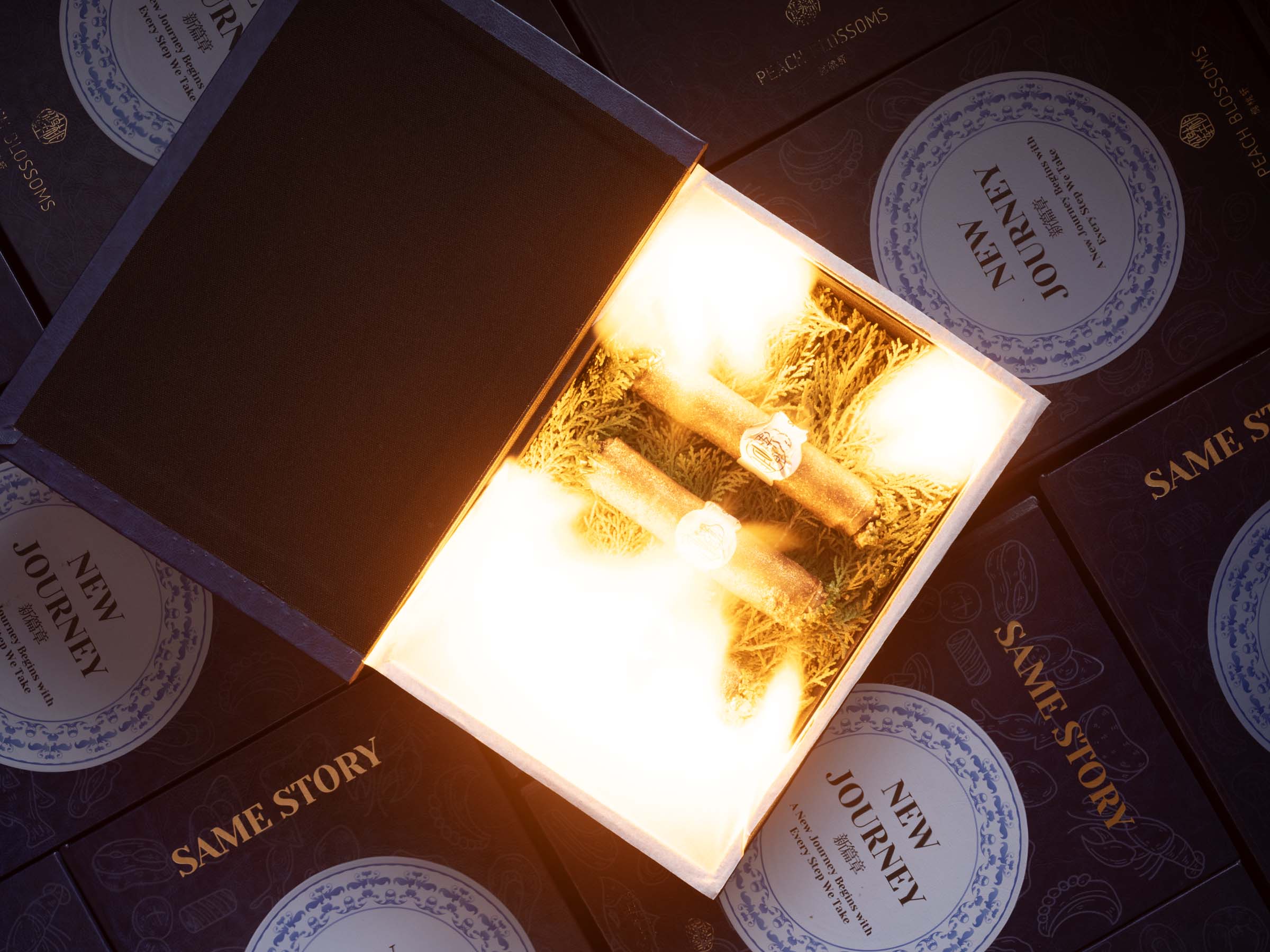
My first attempt was a total miscalculation.
The first attempt was a disaster. I miscalculated the intensity of the flame so my exposure was way way too bright. I then adjusted my shutterspeed and tried again. Still too bright! I then went to the extreme end of my exposure scale and shot at 1/125th of a second and a very small aperture at f16. That got me the closest to a decent exposure.
The final challenge was the correct timing. From the moment the flame began to burn the paper I had to time the optimum moment. In my eyes I could see that moment. However, the time it takes to see that moment and release the shutter from the computer which was tethered to the camera would also have to work into the calculation. Normally I’m not required to capture a “decisive moment” when I’m shooting food. Fortunately on the fourth try I got what I needed.
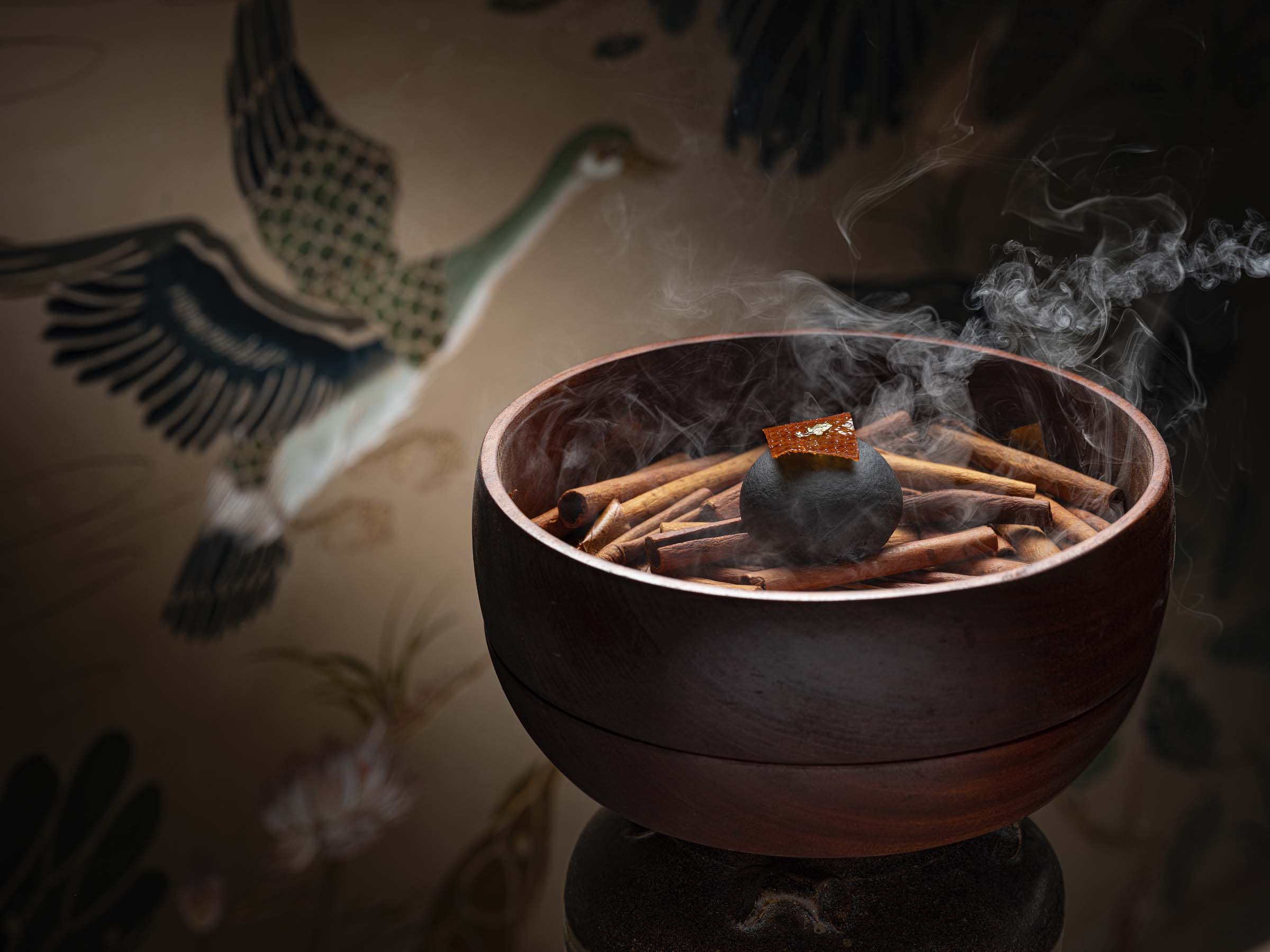
It’s a balancing act. Took a bit of engineering to get the bowl containing a savory duck smoked bun in just the right place.
There are times when I find it necessary to combine more than one exposure to create the final image. This is called composite imaging. Camera is stationary on the tripod and I will do severa exposures where I changed the lighting for various parts of the image. In the computer I will then take the best exposure for one part of the image and layer it over the part of the image I wish to adjust. It’s not photoshop trickery but more of a way to present the image with the lighting I’m trying to achieve. The image above is an example where I’ve used this technique. One exposure for the dumpling and the bowl’s contents, one exposure for the smoke, and one for the shadow area in front of the bowl.
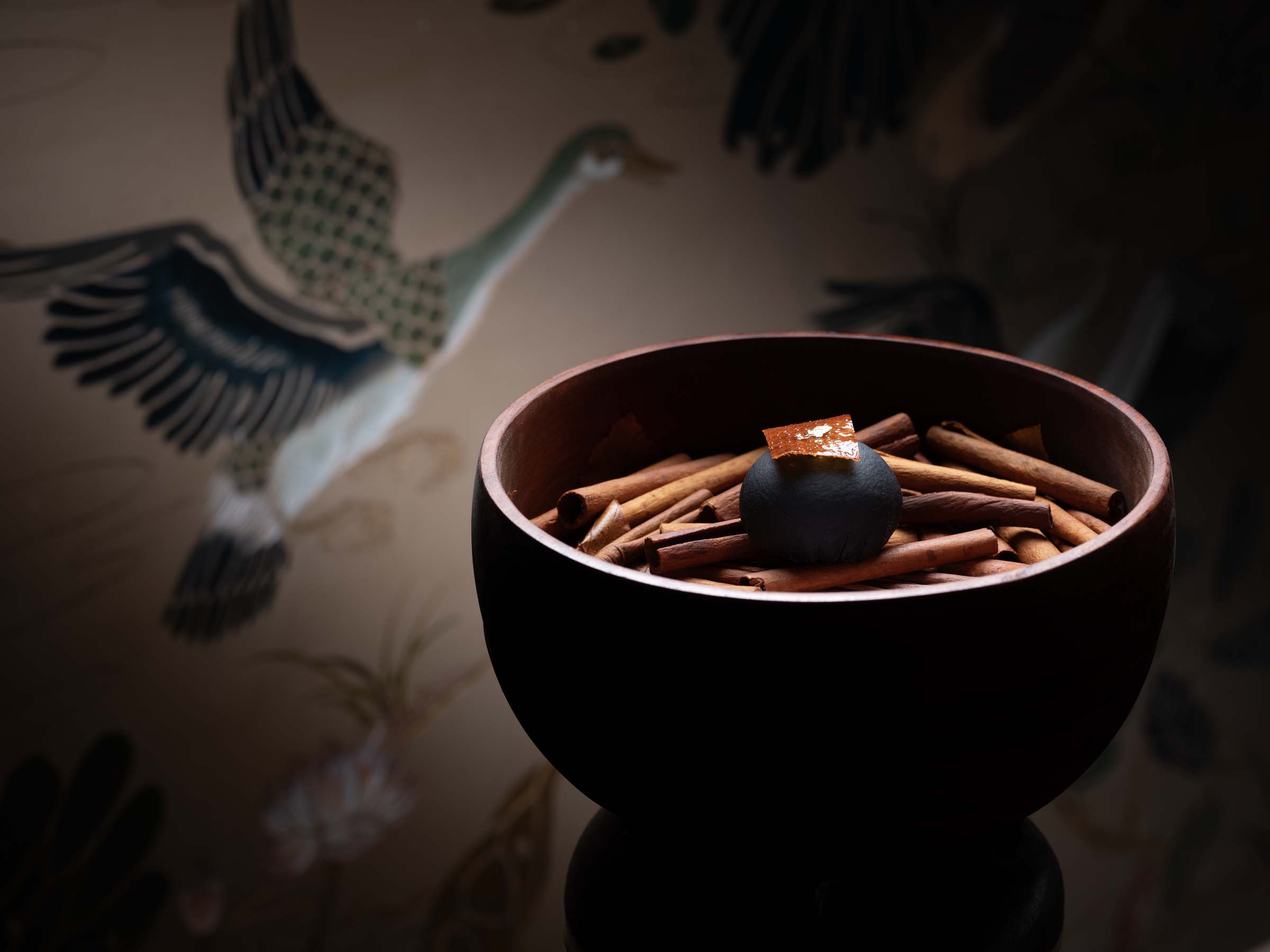
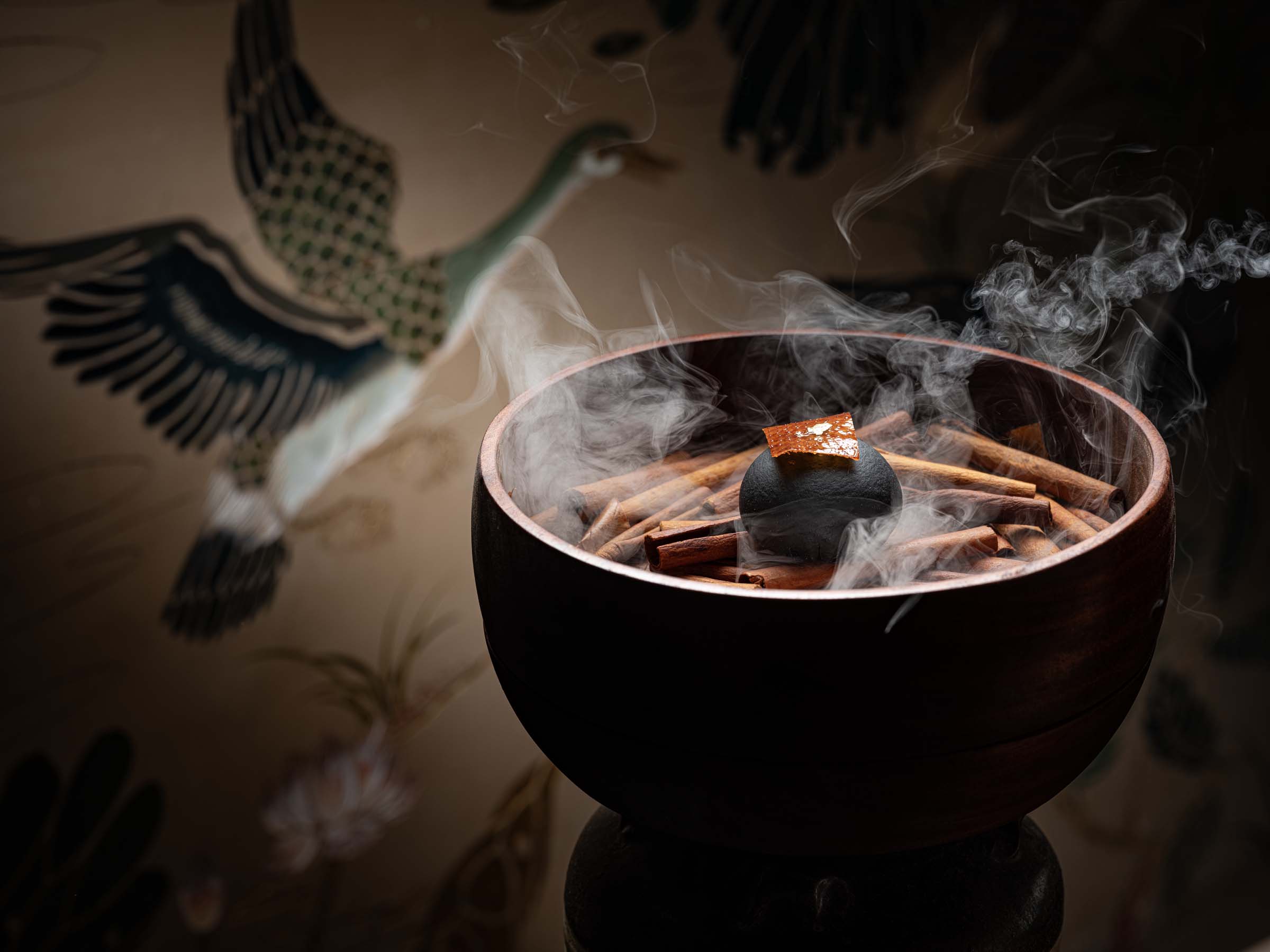
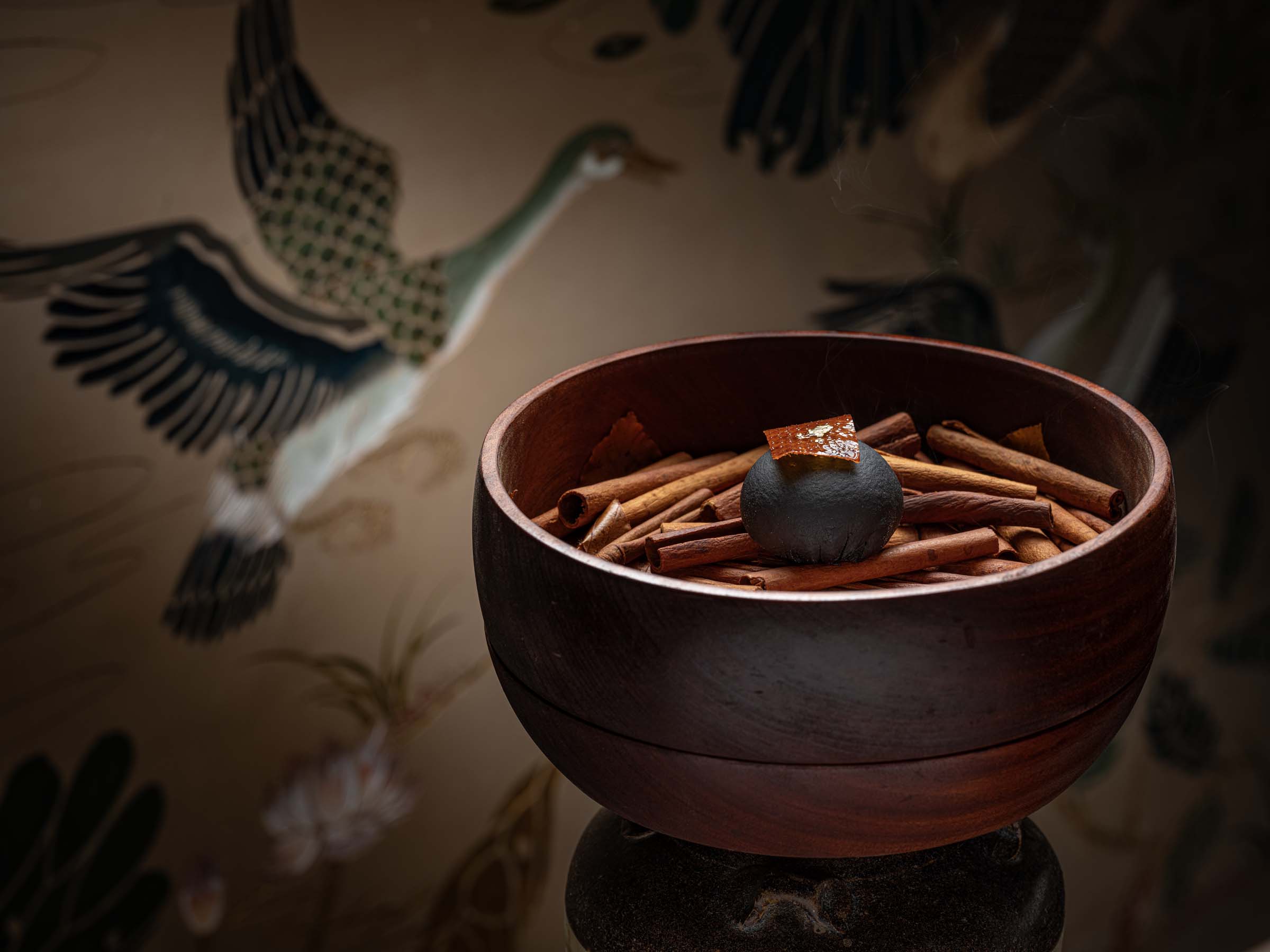
The challenging aspect of this image was its actual location. The bowl and its contents made me think of a bird’s nest with an egg poised to hatch, so I set out to create a composition making use of one of the restaurant’s walls in which birds were displayed. However, the bird I liked best was up quite high which meant I needed to get my tripod up to an altitude where I could make it work. My tripod wouldn’t rise that high so I needed to raise it up using wooden stools I found in the restaurant.
The next step was to get the bowl and its contents up to a height where it was just below the flying goose. My idea was that I wanted it to look like the mother goose was returning to her nest. In order to get the cuisine up to that level I had to build a precarious tower using racks from the kitchen, a champaign stand, and finally an antique vase. I later learned that the vase was a rather expensive object which explains all the worried looks from the staff during this production. Fortunately no mishaps occurred and the final image came together nicely.
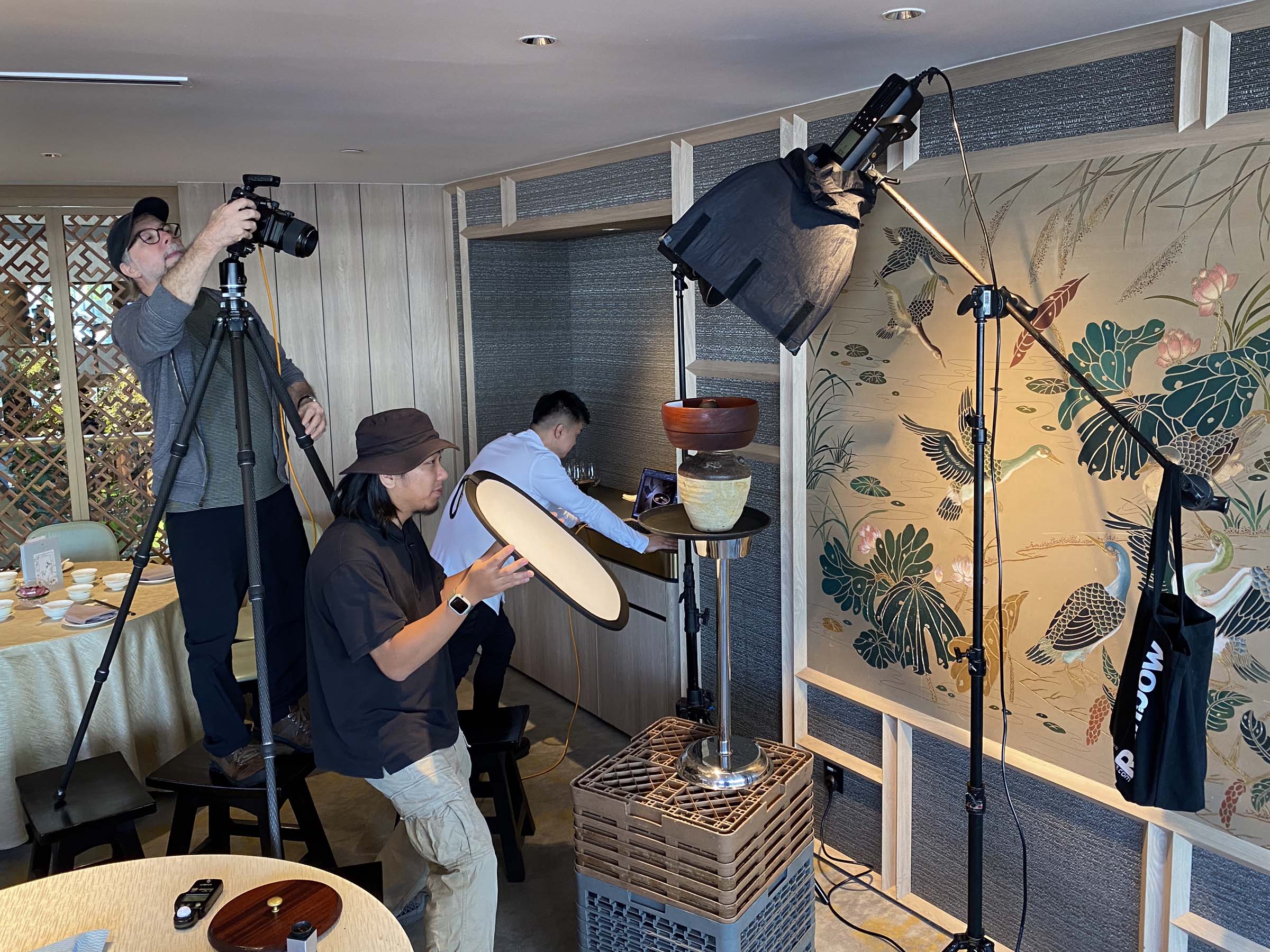
It’s a balancing act.
My goal with any of my food shots is to try and say something about both the cuisine and the venue where I’m shooting. For this next image I made use of the twig-like basket that was being used to deliver the lobster dish. I asked the chef to bring out all of the baskets they had and created a background using them upside down. They added a nice texture and framed his creation quite well. They also had a somewhat surreal look to them. Almost like they were underwater sea creatures or plant life. The lighting for this was simple enough. A small softbox with a fabric grid placed directly behind the food and then use fill cards to bounce light back into the shadows in the front of the plated item.
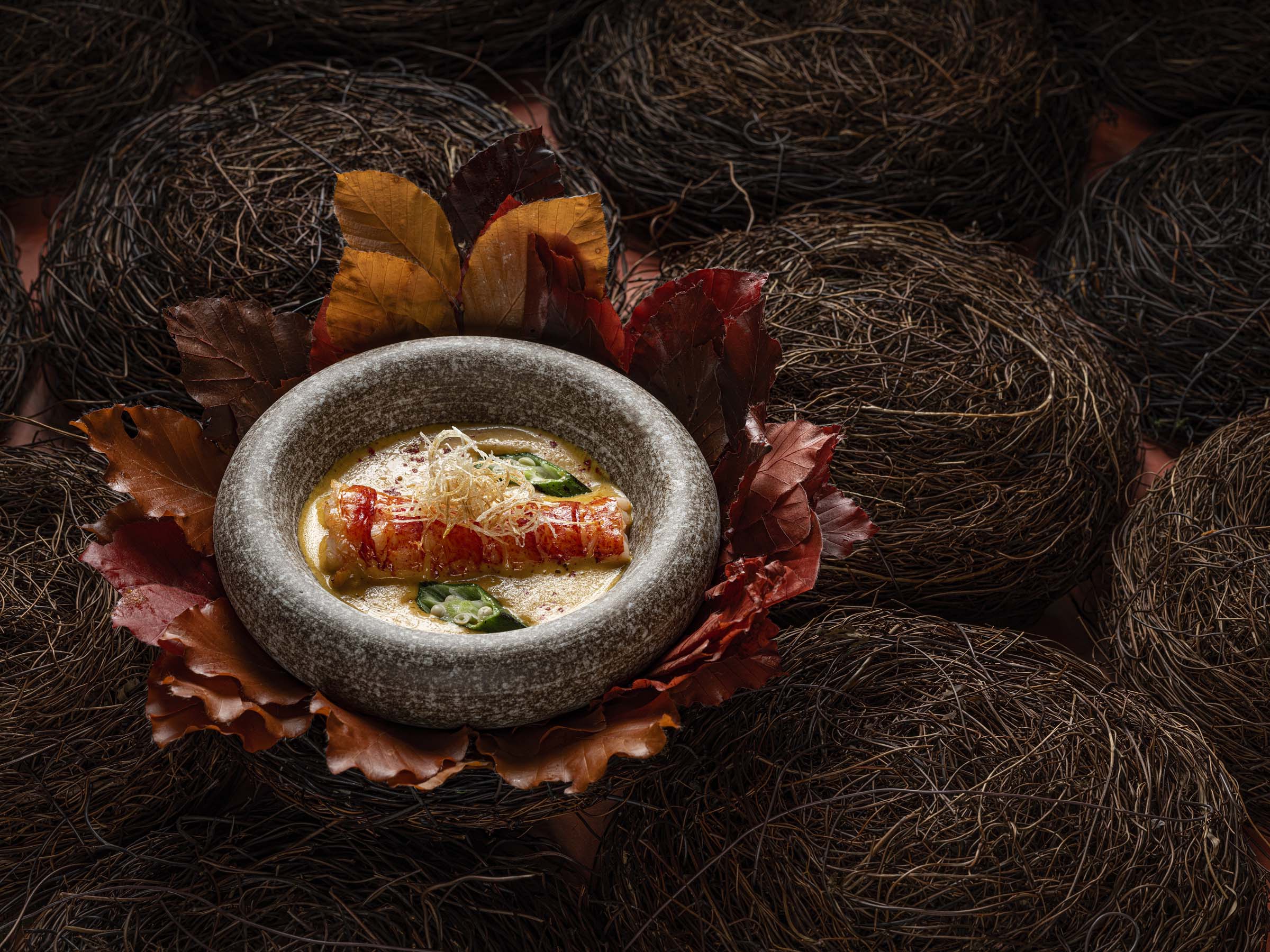
Char-Grilled Sous Vide Lobster with Assam Sauce.
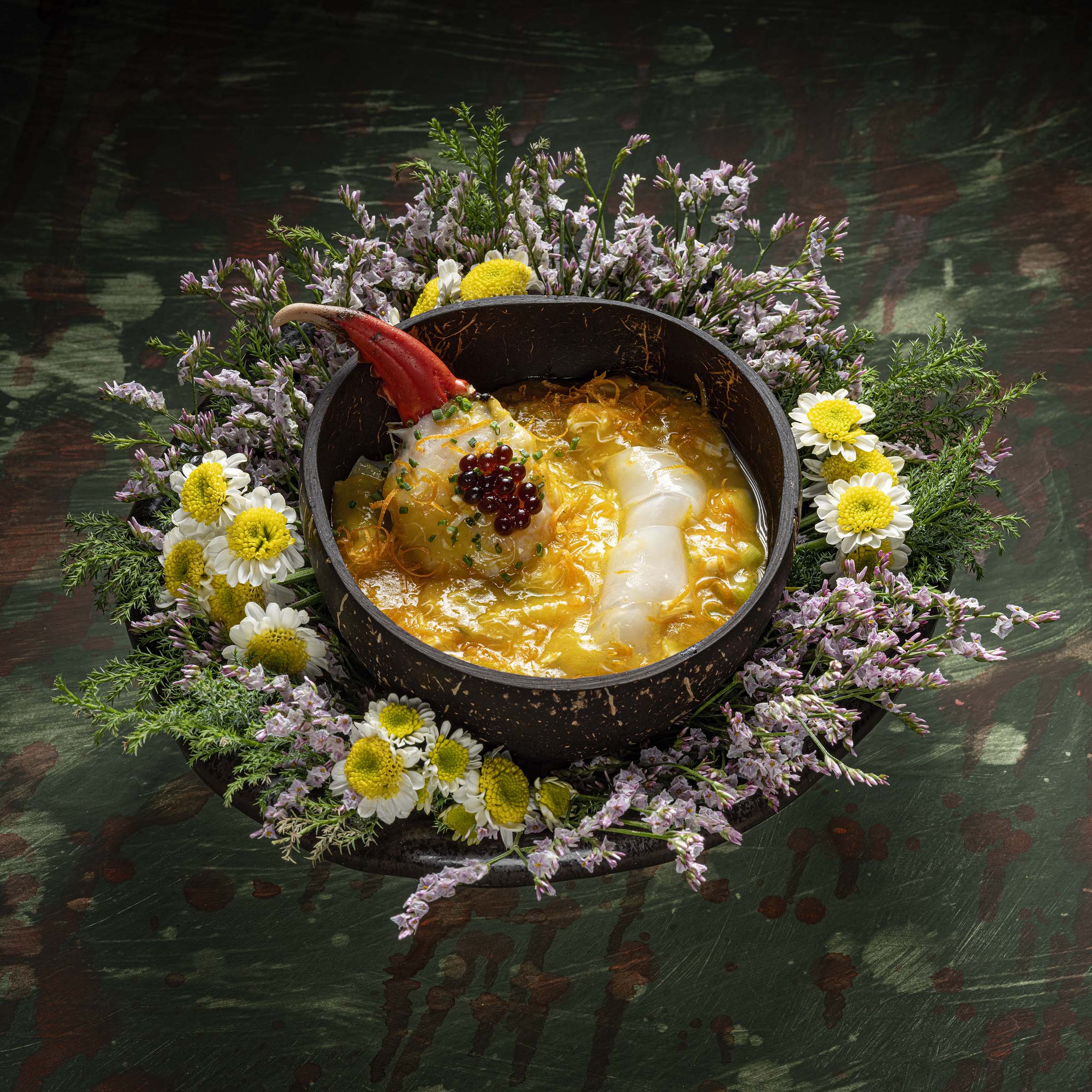
Braised Mung Bean Noodles in Crab Roe Collagen, served with Crab Claw stuffed with Prawn Mousse.
There are times when a desired background cannot be found at the venue where I am shooting. When I’ve exhausted all the materials from the kitchen or the venue itself I’ll then pull out one of my hand-painted backgrounds. I’ll make these during periods when I’m bored or nothing to do. Using a combination water color and acrylic paints I begin making abstract textural backgrounds. I’m not trying to create art but something that works well to frame the cuisine. I purposely work to make sure that there is nothing too recognizable in the painting. The last thing I want is for the viewer to notice my background before they notice the food. When that happens I consider the photo a failure. With all of my images I want the viewer to be drawn in to the food and not my photographic technique. I’m never trying to be clever but working to present the food in such a way that viewer says, “I want to eat that.” That’s the ultimate compliment.
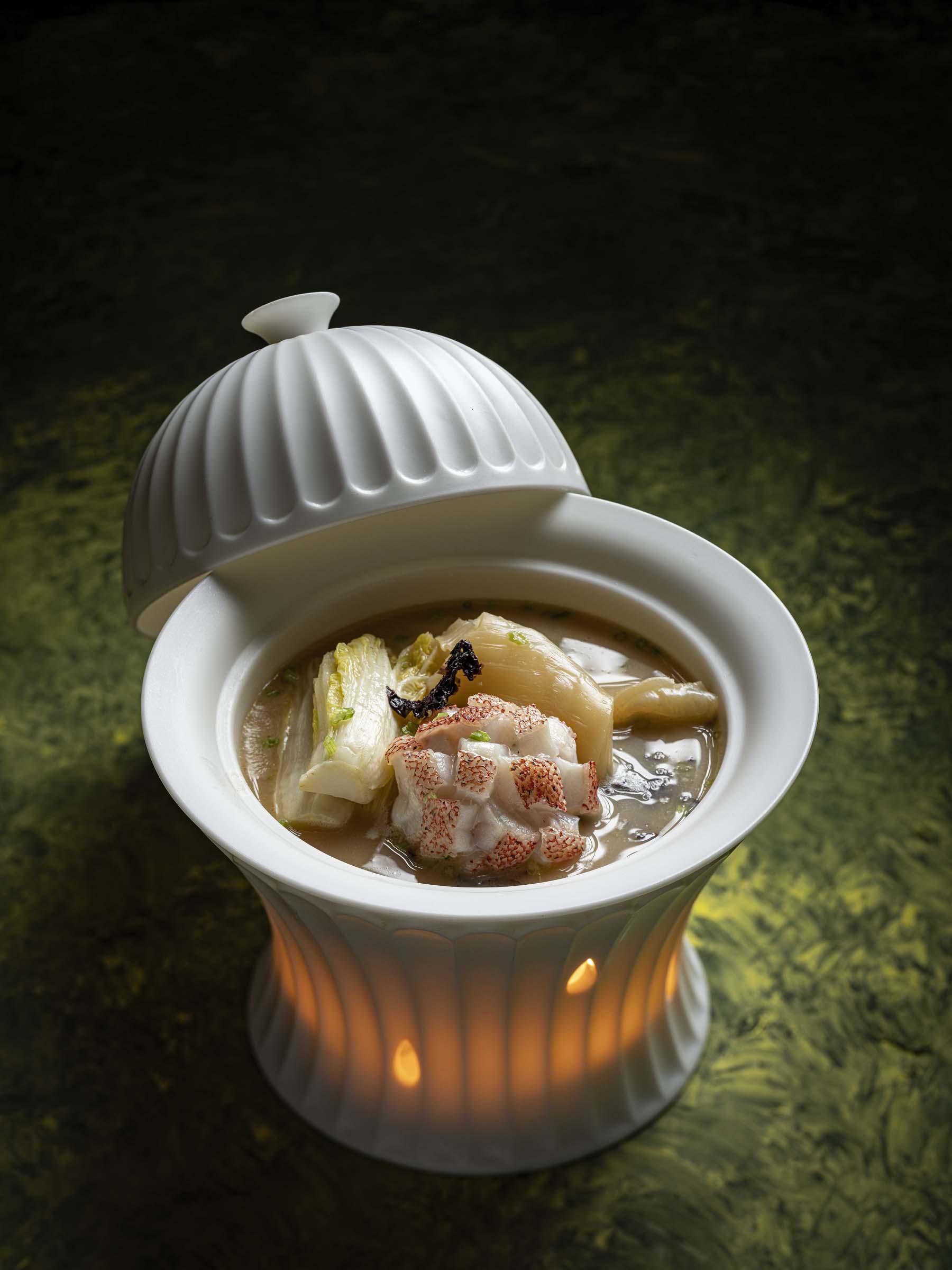
Double Boiled Hydrangea, Coral Trout with Chinese Yellow Wine, Fish Maw, and Cabbage Roll.
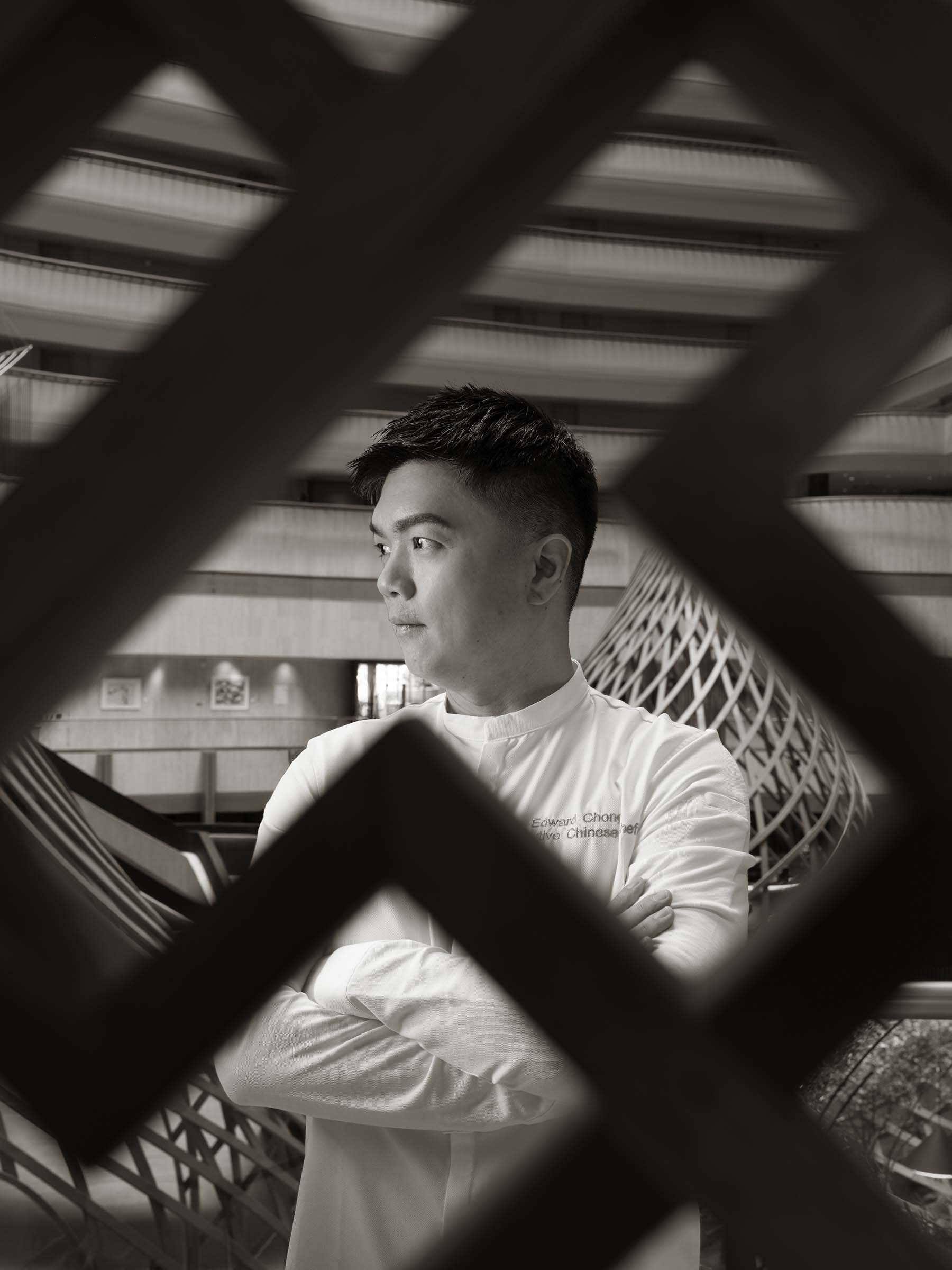
Chef Edward Chong, the Culinary Genious at the Peach Blossom Restaurant.
